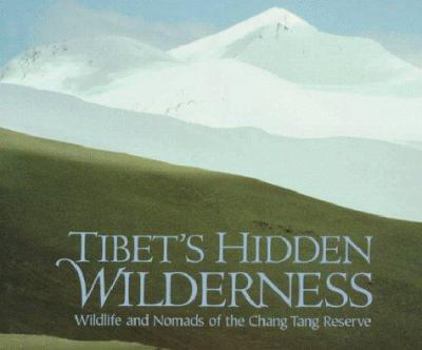Tibet's Hidden Wilderness: Wildlife and Nomads of the Chang Tang Reserve
Select Format
Select Condition 
Book Overview
Tibet's Chang Tang ("Northern Plain") is a vast, remote area where ice-capped peaks soar over windswept steppe and arid plains. Its southern reaches are home to nomadic herders, but most of the region... This description may be from another edition of this product.
Format:Hardcover
Language:English
ISBN:0810938936
ISBN13:9780810938939
Release Date:January 1997
Publisher:ABRAMS
Length:168 Pages
Weight:2.95 lbs.
Dimensions:0.8" x 10.1" x 10.7"
Related Subjects
Animals Arts, Music & Photography Asia Biological Sciences Conservation Ecotourism Environment Field Guides Humor Humor & Entertainment Natural History Nature Nature & Ecology Nature & Wildlife Photography Rural Life Science & Math Specialty Travel Sports & Outdoors Tibet Travel Travel with Pets Wildlife ZoologyCustomer Reviews
1 rating
First-rate pictures and informative text about a beautiful land
Published by Thriftbooks.com User , 14 years ago
_Tibet's Hidden Wilderness_ is a beautiful coffee-table type book (albeit with a fair amount more text than your typical book of this genre) that contains wonderful photographs by the eminent wildlife researcher George B. Schaller. The subject of the book is the people, wildlife, and landscape of the vast Chang Tang in northern Tibet. This land (Tibetan for Northern Plain), is one of "vast empty spaces and howling skies," a treeless steppe located above 15,000 feet, "windswept ranges" home to nomadic pastoralists with their herds of yak, sheep, and goats and a surprising amount of wildlife (several, such as the wild yak, chiru, kiang, Tibetan gazelle, Tibetan brown bear, and Tibetan argali sheep unique to the Tibetan Plateau). A forbidding area, hard to reach physically and also due to politics, Schaller was one of the first Westerners to travel through the region in decades when he started visiting the Chang Tang in the late 1980s (a fact he doesn't trumpet that much but authors in other books were quite impressed with). Granted hard-won permission to visit the region, he hoped to take the most of such a rare opportunity to study and help formulate a way to protect and manage such a large and virtually undamaged ecosystem. The entire region was uninhabited, even by nomads, as late as the 1870s when Russian Colonel Nikolai Przewalski traveled through the area and pastoralists didn't really start arriving until the 1950s when a road opened the region up for settlement. Though humans had started to make an impact on the Chang Tang Schaller, obviously in love with the region, dearly hoped to preserve the area from any further damage; he wrote that no one alive today has ever seen the American West as it was once was, was it massive bison herds and "its prairies unfenced, unplowed, and undamaged by sheep and cattle." He hoped to spare the Chang Tang such a fate. Instrumental in encouraging the Chinese government to establish one of the world's largest reserves in the Chang Tang, Schaller didn't stop there as he continued to research the land's wildlife, worked to educate nomads about the value of wildlife, help document poaching, and in general help the locals and Chinese officials make the reserve a real one, not just one on paper. He envisioned a multi-use sanctuary, one in which wildlife, livestock, and people could all coexist, but for that to happen there had to knowledge of the interactions between livestock and wildlife, in particular as it related to overgrazing. Schaller made a dozen journeys into the Chang Tang and on writing the book he debated on upon how to best present what he learned and saw. In the end, he decided to not write a guidebook with chapters on say nomads or wild yaks, a "tidy and logical presentation," as this would not convey the often unpredictable way in which his research was actually done as well as leaving out what he felt and saw at a personal level. In the end he decided upon a "book of incidents, facts,





